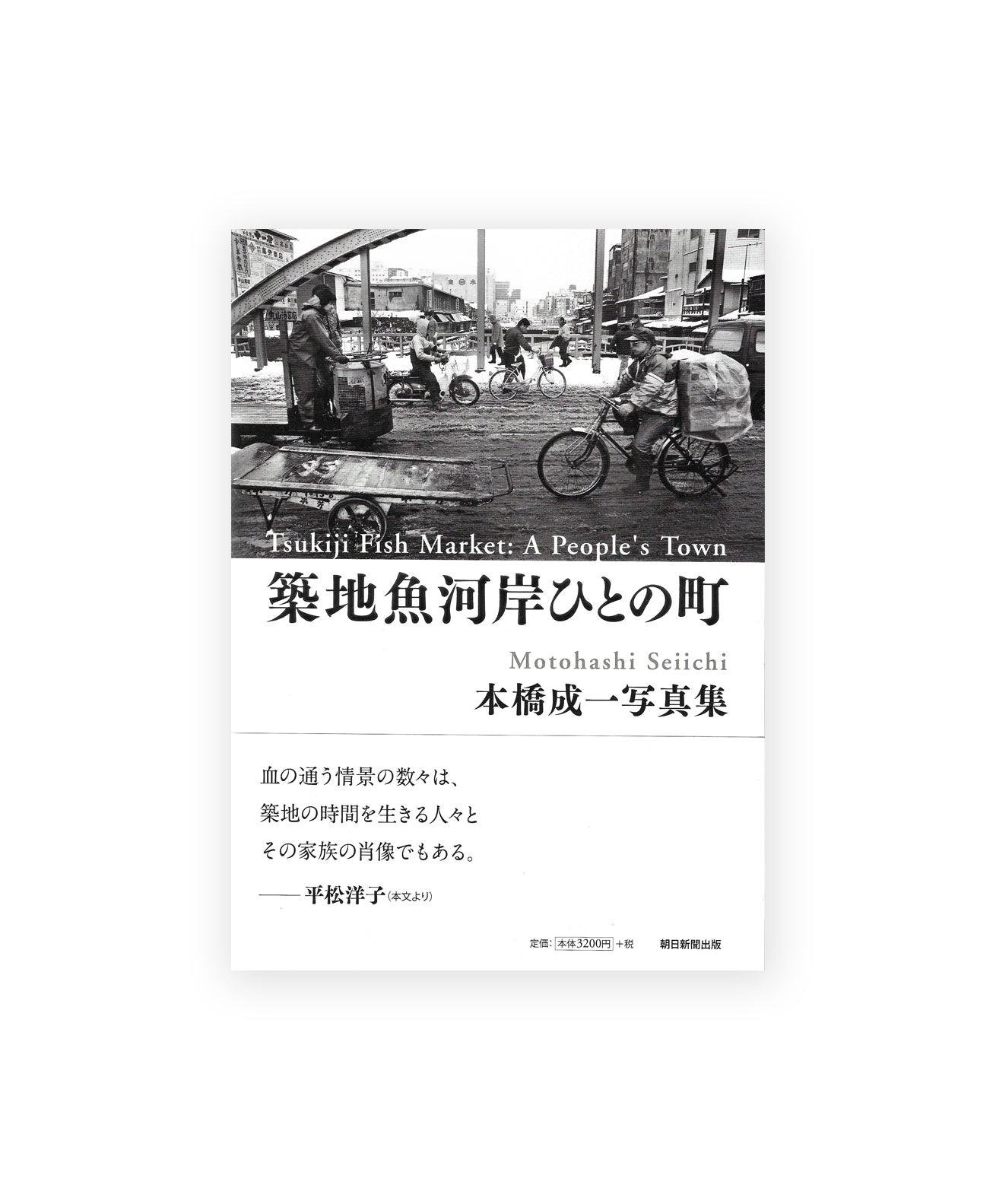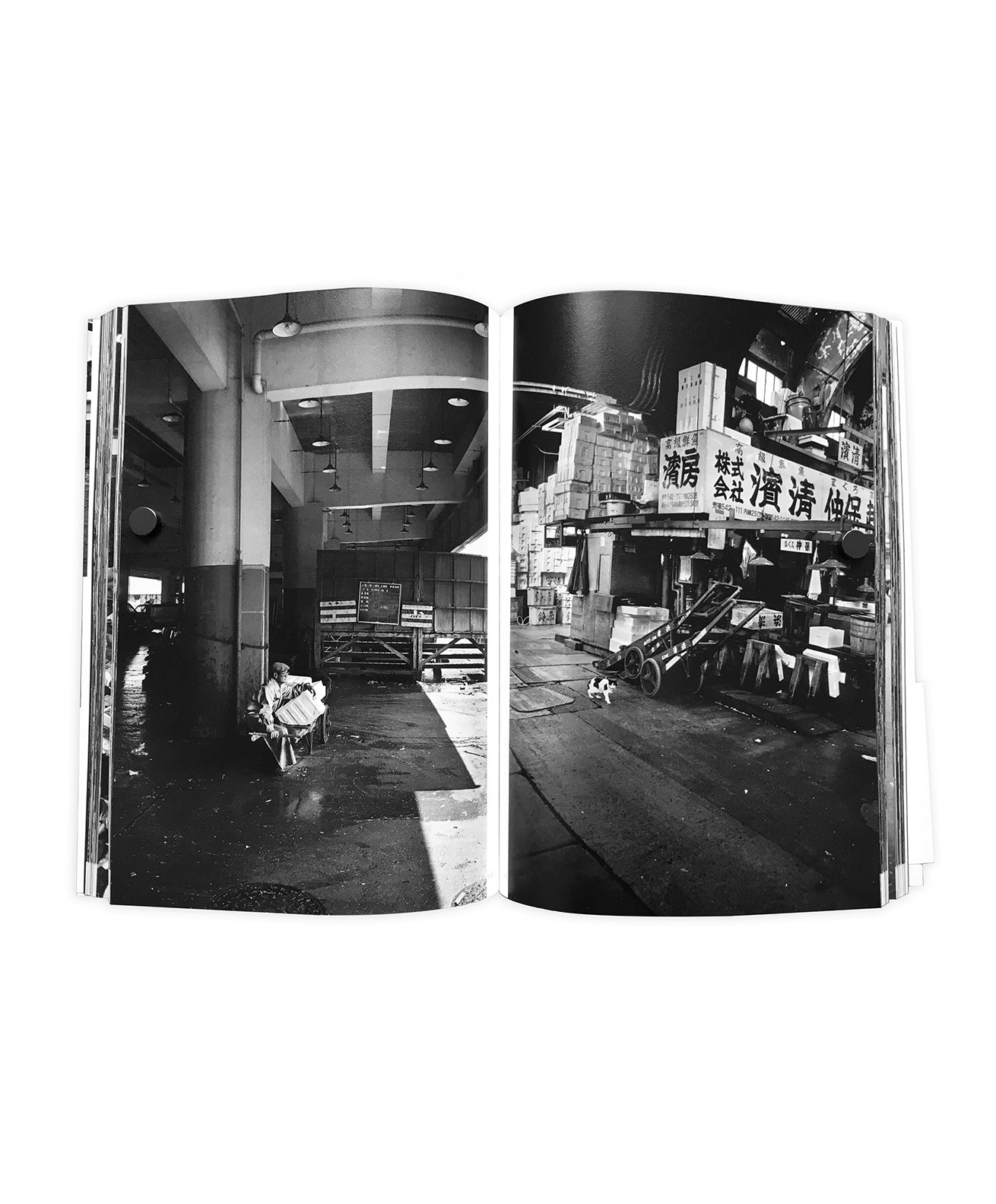SEIICHI MOTOHASHI - Tsukiji Fish Market: A people's Town
Pickup currently unavailable at 1 rue des Minimes
– Default Title
-
1 rue des Minimes
09709759181 Rue des Minimes
75003 Paris
France
SEIICHI MOTOHASHI
Tsukiji Fish Market: A people's town
Published by Asahi Shimbun, 2016
Book size 25.7 x 18.2cm
Pages 256 pages
Softcover
Language Japanese, English
First edition
In the early 1980s, Japanese photographer Seiichi Motohashi documented for several years the Tsukiji fish market in Tokyo, a huge space in the city where restaurants and fishmongers came to stock up on fish and seafood, major elements of food. Japanese.
As the title of his book suggests, at that time Tsukiji was a miniature city where people did more than buy fish. We met there, we talked, we ate and socialized there, and sometimes we slept there.
The fish present at the beginning of the book, with the tuna arranged side by side for the auction, quickly gives way to images where the human takes over: the sellers and buyers of fish, but also all the trades that revolve around from the fish market and live on it, the sellers of kitchen utensils, the restaurants and street vendors, the transporters and day laborers ready to lend a hand for a penny, not to mention the children playing on the street.
This book takes its full value at the moment when the fish market has just moved to the city limits, in a sanitized location, with well-designed alleys, and when the old Tsukiji has become a tourist place where the concept of market and exchange is gone.
This book is a unique testimony to a symbolic place that has just disappeared.
------------------------
In the early 1980s, Japanese photographer Seiichi Motohashi spent several years documenting the Tsukiji fish market in Tokyo, a huge space in the city where restaurants and fishmongers came to stock up on fish and seafood, a major component of the Japanese diet.
As the title of his book suggests, Tsukiji was at that time a miniature town where people did much more than buy fish. They met, talked, ate and sometimes slept there.
The fish that is very present at the beginning of the book, with the tuna lined up side by side for the auction, quickly gives way to images where humans take over: the sellers and buyers of fish, but also all the professions that revolve around the fish market and make a living from it, the sellers of kitchen utensils, the restaurants and street vendors, the transporters and day laborers ready to lend a hand for a penny, without forgetting the children who play in the street.
This book takes on its full value at a time when the fish market has just moved to the city limits, in a sanitized location with well-designed alleys, and where the old Tsukiji has become a tourist spot where the notion of a wholesale market and exchange has disappeared.
This book is a unique testimony of a symbolic place that has just disappeared.



